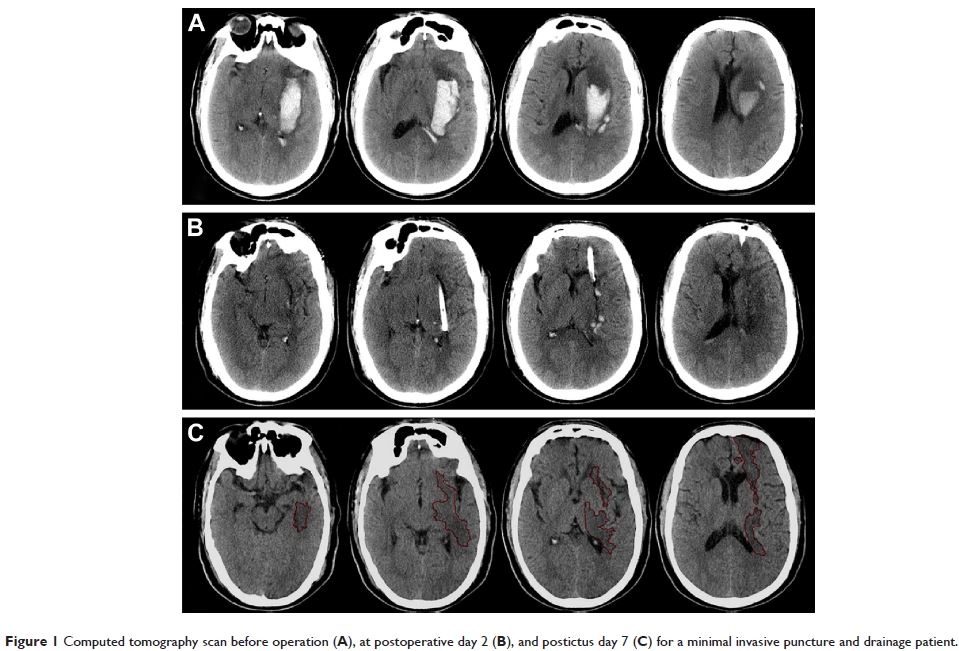100205
论文已发表
注册即可获取德孚的最新动态
IF 收录期刊
- 3.3 Breast Cancer (Dove Med Press)
- 3.4 Clin Epidemiol
- 2.5 Cancer Manag Res
- 2.9 Infect Drug Resist
- 3.5 Clin Interv Aging
- 4.7 Drug Des Dev Ther
- 2.7 Int J Chronic Obstr
- 6.6 Int J Nanomed
- 2.5 Int J Women's Health
- 2.5 Neuropsych Dis Treat
- 2.7 OncoTargets Ther
- 2.0 Patient Prefer Adher
- 2.3 Ther Clin Risk Manag
- 2.5 J Pain Res
- 2.8 Diabet Metab Synd Ob
- 2.8 Psychol Res Behav Ma
- 3.0 Nat Sci Sleep
- 1.8 Pharmgenomics Pers Med
- 2.7 Risk Manag Healthc Policy
- 4.2 J Inflamm Res
- 2.1 Int J Gen Med
- 4.2 J Hepatocell Carcinoma
- 3.7 J Asthma Allergy
- 1.9 Clin Cosmet Investig Dermatol
- 2.7 J Multidiscip Healthc

已发表论文
治疗基底神经节的自发性脑内出血的最小侵入性穿刺和引流与内镜下手术的对比
Authors Li Z, Li Y, Xu F, Zhang X, Tian Q, Li L
Received 22 August 2016
Accepted for publication 11 November 2016
Published 25 January 2017 Volume 2017:13 Pages 213—219
DOI https://doi.org/10.2147/NDT.S120368
Checked for plagiarism Yes
Review by Single-blind
Peer reviewers approved by Dr Amy Norman
Peer reviewer comments 2
Editor who approved publication: Professor Wai Kwong Tang
Abstract: Two prevalent
therapies for the treatment of spontaneous intracerebral hemorrhage (ICH) in
basal ganglia are, minimally invasive puncture and drainage (MIPD), and endoscopic
surgery (ES). Because both surgical techniques are of a minimally invasive
nature, they have attracted greater attention in recent years. However,
evidence comparing the curative effect of MIPD and ES has been uncertain. The
indication for MIPD or ES has been uncertain till now. In the present study,
112 patients with spontaneous ICH in basal ganglia who received MIPD or ES were
reviewed retrospectively. Baseline parameters prior to the operation,
evacuation rate (ER), perihematoma edema, postoperative complications, and
rebleeding incidences were collected. Moreover, 1-year postictus, the long-term
functional outcomes of patients with regard to hematoma volume (HV) or Glasgow
Coma Scale (GCS) score were judged, respectively, by the case fatality, Glasgow
Outcome Scale (GOS), Barthel Index (BI), and modified Rankin Scale (mRS). The
ES group had a higher ER than the MIPD group on postoperative day 1. The MIPD
group had fewer adverse outcomes, which included less perihematoma edema,
anesthetic time, and blood loss, than the ES group. The functional outcomes
represented by GOS, BI, and mRS were better in the MIPD group than in the ES
group for patients with HV 30–60 mL or GCS score 9–14. These results
indicate that ES is more effective in evacuating hematoma in basal ganglia,
while MIPD is less invasive than ES. Patients with HV 30–60 mL or GCS
score 9–14 may benefit more from the MIPD procedure than from ES.
Keywords: intracerebral hemorrhage, minimal invasive, endoscopy, puncture, basal ganglia
Keywords: intracerebral hemorrhage, minimal invasive, endoscopy, puncture, basal ganglia
